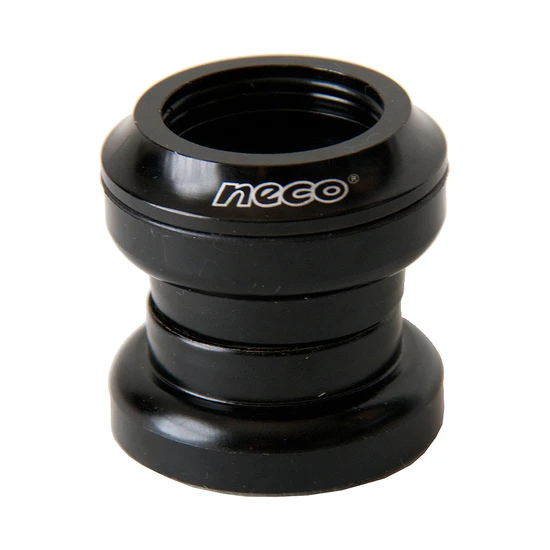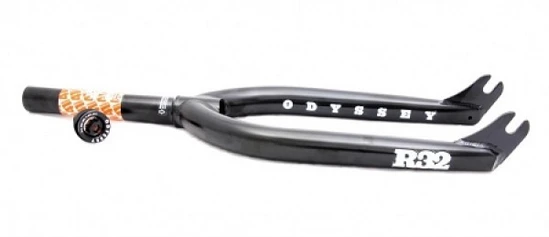Buy BMX HandleBars, BMX Stems, BMX Headsets & BMX Forks
Contact us for a wide selection of BMX racing parts, all designed to get you up front and winning! We stock forks as well as bars; stems that are stiffer than traditional handlebars for increased control when cornering at high speeds on bumpy courses or rough terrain; headsets with lighter weight grips which allow racers greater precision so they can make small adjustments in order avoid crashes. The shop also offers stem locks – perfect if your bike has removable steering assemblies (like ours). Our inventory includes other essential items too like tires
Handle Bars Buying Guide
For a first-time buyer of BMX handlebars, the inventory can appear quite tricky in terms of which to select and what to check. Almost all BMX handlebars look and read the same, with a few changes here and there in the geometry, material, colour, or any other add-ons. On the contrary, these are the key points that help us characterise the best handlebar in the market.
To make your purchase easier for you, below are the specks to consider foremost when selecting a new handlebar for your BMX setup.
Choosing the right type of handles for your BMX can render your riding experience more suited for your needs. There are several different factors according to which BMX handlebars are categorized: the number of bars, material, rise and width, the direction of bar bend, heat treating, butting and the shape of the crossbar. We’ll take a dive into all these parameters so you know what to look for when browsing the BMX handlebar market.
Material
The material is usually the same, stone-hard steel. However, there are different kinds of steel. When it comes to BMX bike bars, it’s either Hi-Tension Steel or 4130 CrMo (Chromoly). Hi-tension steel is strong but heavy, so it’s usually found in entry-level bike bars. Because of this, most aftermarket BMX handlebars are made from Chromoly alloy.
Most handlebars are made up of aluminum, Chromoly, and carbon fiber. Out of the three, Chromoly material is the premium in quality because it is highly durable and strong. Chromoly steel is also used to manufacture other auto-parts of a bike. Therefore, for a strong and sturdy handlebar that will not be bent anytime soon, Chromoly should be your ultimate choice.
Some riders like to keep their handlebars light. Aluminum and carbon-fiber are lightweight materials that are suitable for racing but can bend under a lot of pressure.
The measurements:
You must be mindful of the width and the height. The width of the handlebar measures from one bar to the other. The broader it is, the smoother the riding experience. A wide handlebar also gives better leverage and is easier to push. However, they are not exactly easy to spin.
On the other hand, the rise of the bars is measured from the bottom stem to the highest part. These should range from mid-rise to high-rise, as it compels the rider into a safer and comfortable posture.
2 Piece vs 4 Piece Bars
When it comes to the BMX bars’ macro shape, they mostly diverge in the number of bars used. Obviously, we can hint from their naming that the 2 piece is formed from 2 bars, where one of the bars is a long continuous piece of rounded metal that’s bent into its current shape, with the second bar welded between its bent grips for structural purposes that forms the crossbar. Likewise, the 4 piece uses 4 bars, where the grips are two separate bent pieces of rounded metal, which are connected by 2 other individual cross guards that keep the structure intact. Though it might seem that there is a structural difference, this is purely aesthetical and makes no difference other than what looks better to you.
The type:
Handlebars differ in type with being either 2-piece or 4-piece. The former is more lightweight and most commonly used, whereas the other one is uncommon and does not particularly influence the riding style.
Handle bar FAQs
1. Can these handlebars fit on all bikes? These handlebars can fit on any bike. You may need to modify or lengthen your throttle and brake cables.
2) What handlebar material should I choose for freestyle riding? Chromoly and lightweight aluminum are ideal for freestyle riding.
What is upsweep, and what are backsweep?
The angle at which the top-grip of the bar meets your wrist is called the upsweep. For maximum comfort and impact absorption, it should be at an angle that connects the inner and outer wrists with the grip section of the bar. The backsweep refers to the angle between the top bar and the grip section. These angles are crucial to protect your wrists from injury in the event of impact or shock.
BMX STEMS
Today there are numerous competitions and types of BMX bikes which all make use of one crucial component, the stem. This component connects the handlebars to the steerer tube which is often known as the bicycle fork. This is why the stem is important as it can affect your ride.
HOW THE STEM AFFECTS YOUR RIDE
REACH
The reach or height of the handlebars is set using the stem and it also dictates the type of stem you need to get. If you want a lower handlebar position then you should go for a front-loaded stem for your setup. If you want a high BMX handlebar stem position you should consider getting a top load stem.
Bar positioning– Before choosing, you need to think how the bar positioning will affect your rides. This means that you need to set your preferred height. If you prefer the bar to be a bit low, the front load BMX stem will be the best. However, if you love riding when the bar is a high, then you should consider a top load BMX stem.
BAR POSITIONING
The stem can also affect your ride height which also affects the type of stem you’ll need to get. For a low rider, you’ll want to get a front load stem whilst for someone who wants a higher ride height you should go for a top-load BMX handlebar stem. But there are other things you need to consider when searching for the right BMX handlebar stem
Reach – The height of your stem may affect your reach. A short stem will allow you to maintain a sharper and an upright position. However, it may limit your speed. On the other hand, a longer stem will not affect your speed and it is the best in terms of stability. On top of that, it provides more leverage on the front wheels.
BMX Stem Conclusion
The two types of BMX stems top load and front load stems. Even if they have different designs, their functions are the same. Before buying, ensure that you have picked the one that suits your preferences because picking a wrong stem may affect the performance of your BMX bike. If you need a stable BMX stem which will allow you to ride at a speed, then you should look for a top load stem
BMX HEAD SET
The most important thing to consider when looking for a headset is knowing the style of headset that fits your frame. BMX Frames are designed to use one type of headset, if you’re not sure what type you need then one of our experienced staff will be happy to give you advice. Just drop in or give us a call!
The headset is the bearing set inside your frame that allows your bars and fork to spin freely. There are several different designs and styles available.
Types of Headsets:
Integrated Headsets – Integrated headsets use sealed cartridge bearings. These bearings are pressed directly into the headtube of the frame without the need for additional bearing cups or shims. This system is the most widely used style of headset in aftermarket BMX frames.
Internal Headsets – Internal headsets, also sometimes referred to as “semi-integrated headsets,” use a press-fit system that functions similar to an integrated headset design. The difference is that internal headset bearings do not rest directly inside the frame, but instead use an additional shim or bearing cup inside the headtube to position the bearings.
It can be difficult to tell the difference between integrated and internal headsets unless you know what to look for. If there’s any difficulty discerning between the two, look for a thin bearing cup or shim resting just above or below the headtube. If there is one, you likely have an internal headset.
Standard Headset – Standard headsets are found in older frames and complete bikes. This headset uses bearing cups that are pressed into the top and bottom of the frame, and the bearings rest outside of the headtube. Because the bearing cups are positioned externally, it is easy to identify this style of headset without removing the component.
BMX FORKS.
A new bicycle fork can be one of the best bike upgrades available: unlocking the performance potential of budget bikes, shaving valuable grams from racers’ mounts and giving gravity riders the confidence to tackle tough terrain at speed.
First up, you’ll need to buy the right set of forks for your bike type not just BMX, but even under the different disciplines there is a huge range available, from featherweight carbon fibre race blades to burly long-travel mountain munchers, the choice is huge.
It’s essential to match the type of fork you are looking for with the type of riding you enjoy, and understanding some of the technical jargon will help you choose from the array of models on offer.
A new fork can be a great upgrade for your BMX, potentially cutting weight from your ride, improving handling and of course looking good!
BMX bikes are famously and brilliantly minimalist and so every component needs to work at it’s very best. On a BMX, a fork not only holds the front wheel in place and controls direction but also has a fairly unique set of stresses and demands placed on it
Choosing a fork upgrade then needs to be a carefully balanced process to help to get the most from your ride. Here’s our essential guide:
Why should I upgrade the fork on my BMX?
A new fork can be a great upgrade for your bike, potentially cutting weight, improving handling and of course looking good!
Many stock bikes are fitted with heavy high tensile steel forks, a lighter-weight unit made from better-quality steel (usually chromoly) can make it easier to get the front end off the ground for tricks and jumps.
So is it just a different material then? Is that it?
Well obviously not, no. Features vary from model to model with tapered legs saving further weight and CNC’d steerers improving strength.
Manufacturers will often label their forks according to intended use (flatland, park, street, race or dirt jump) but in reality BMX forks are fairly standard when it comes to materials and sizing. The standard BMX fork will use a 1 1/8” steerer tube with an integrated headset race but dropouts can be 3/8” (10mm) or 14mm for heavy-duty applications, so check the size of your front axle.




